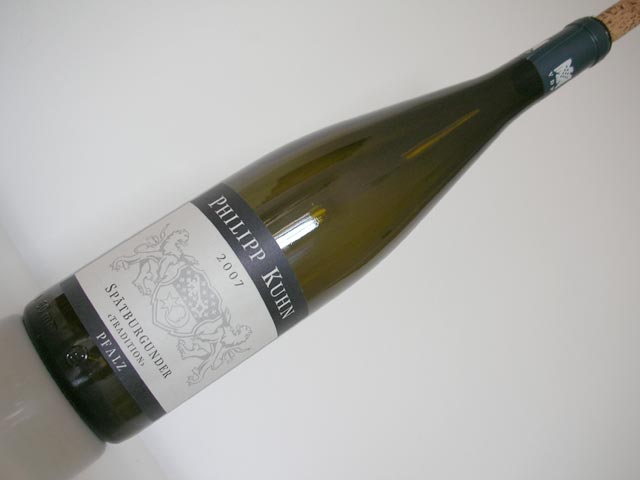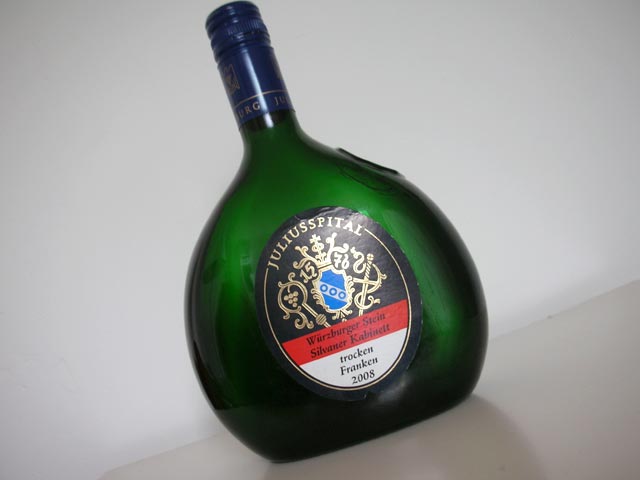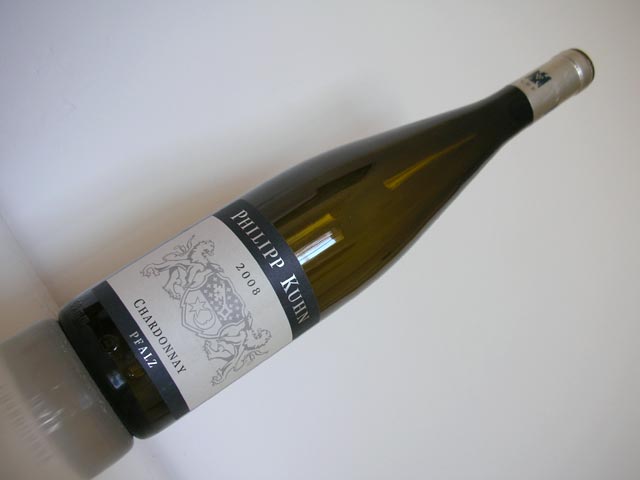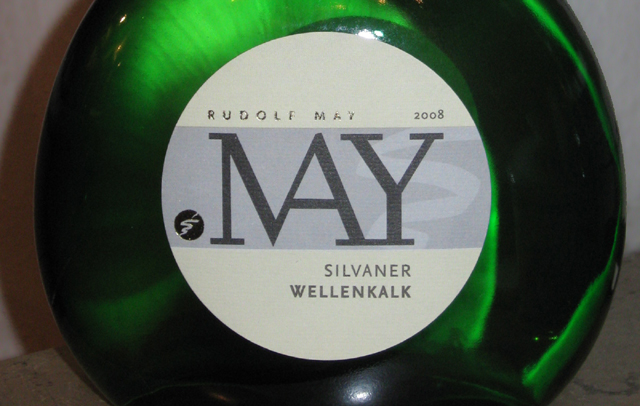Philipp Kuhn, Spätburgunder Tradition, 2007
Again, it is back to the Pfalz, this time to take a look at the entry-level Pinot Noir from the Kuhn winery. The colour is quite dark and intense (for a German Pinot Noir), just screaming deep berry flavours. The first sniff already shows that this is not an empty promise: cherries, yeast and mushroom, but also black currant and a bit of mustard come together with leather aromas and a hint of chocolate to form a robust, but very smooth and enticing nose.








